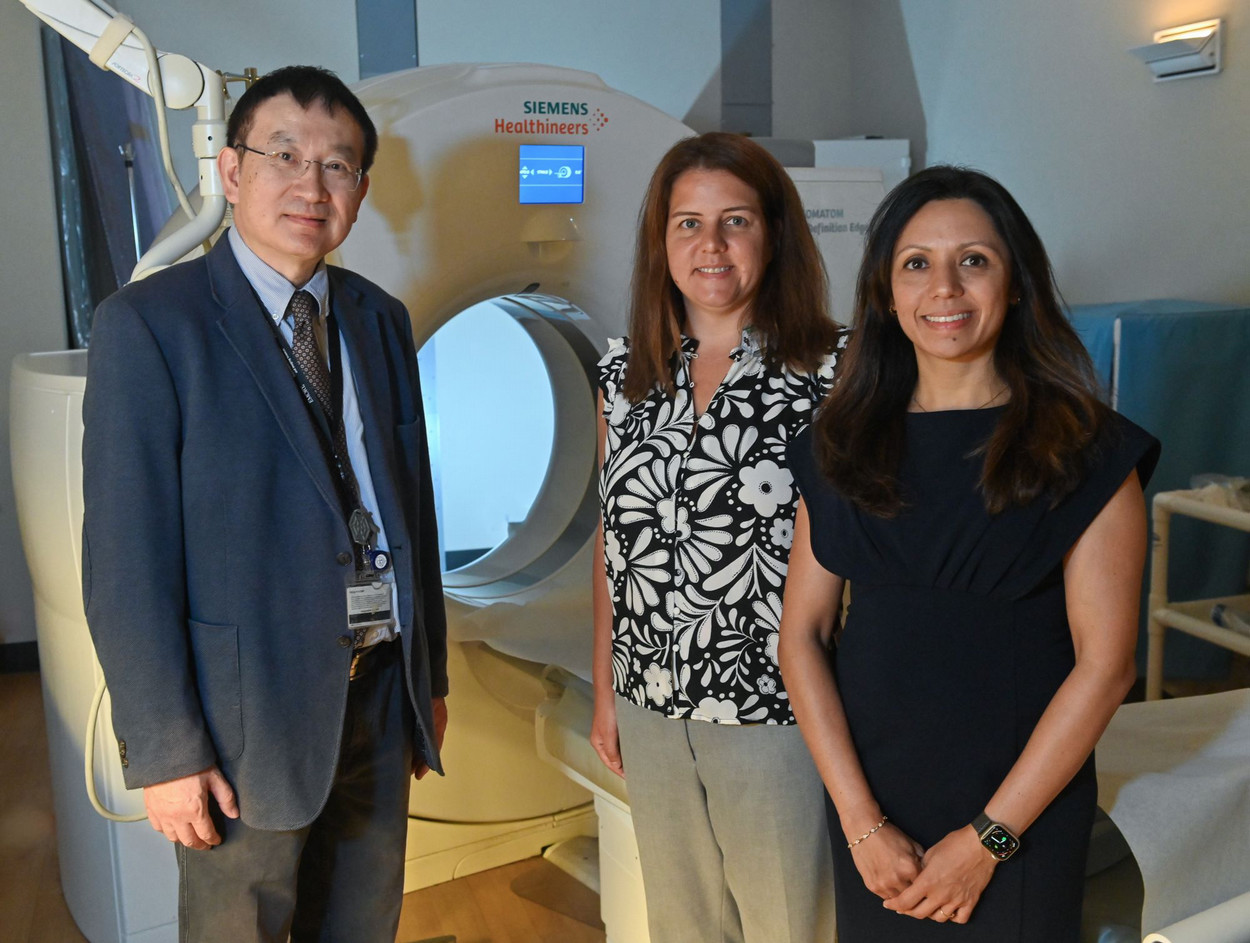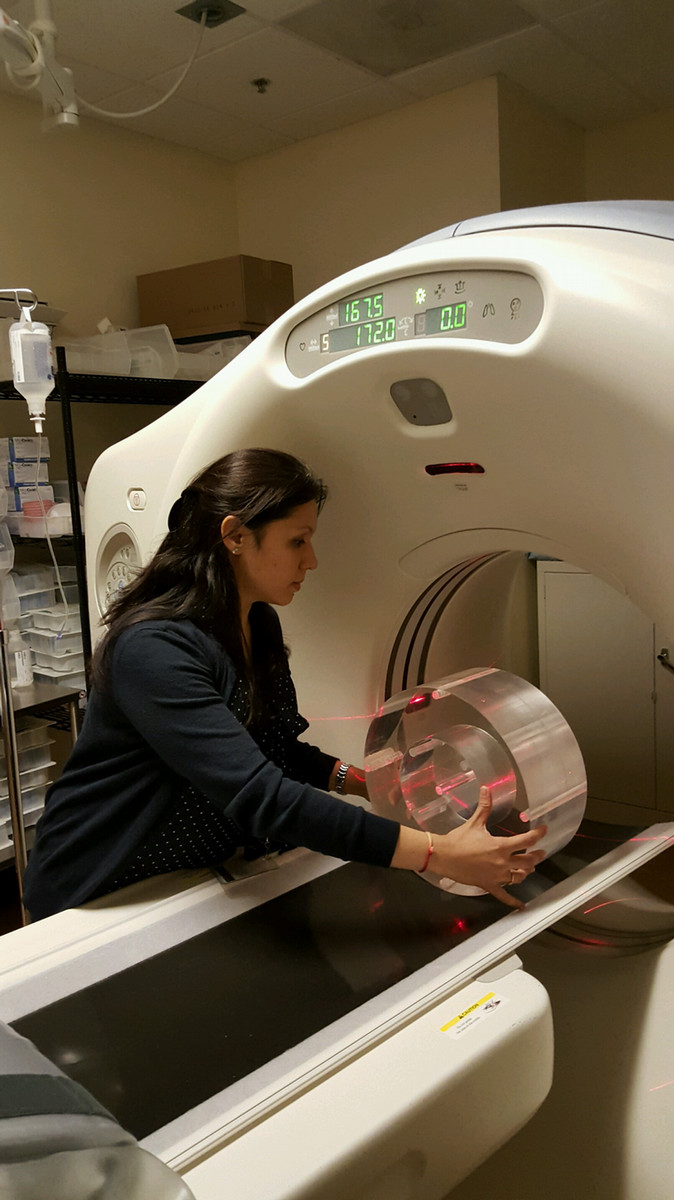Training

• Rotations are organized by modality. In addition there are rotations in informatics and radiation safety and dosimetry.
• Because of the collaborative training relationship between Emory and Alliance Medical Physics, residents will visit most Emory campuses and many hospital systems in the Atlanta metro area as part of their training.
2. How is resident progress assessed?
• Residents meet regularly with their rotation mentors and the program director. Progression through the rotations include written and oral examination assessments as well as evaluations by the rotation mentors.
3. Are there research expectations for residents in your program? If so, what kind of research is currently available?
• Residents are expected to participate in a clinical quality improvement project. Many participate in more than one over their two years of training. Our residents have presented their work at local and national conferences as well as published their work in peer-reviewed journals. Please check our website for examples of their work.

4. How are residents paired with research mentors? Are they paired with a single mentor or will they be expected to work on a new project each rotation?
• Residents are paired with mentors that support the focus of their quality improvement project. Each rotation has a different lead mentor but these rotation mentors may be different than the resident’s research mentor. Projects commonly span over several rotations and may last up to a year or more.
5. What consistent clinical responsibilities do your residents have (machine QA, quality conferences, etc.)?
• Residents are expected to participate in required assessments of imaging equipment (e.g. annual surveys), uploading of reports, dose audits, facility design and shielding, and many other activities. These expectations are completed under the guidance of the program faculty and residents are progressively given more independence over the duration of the program.
6. Will there be commissioning opportunities in the near future? Of what equipment?
• It is common for new equipment to be installed or components replaced on existing systems that then require the physicist to assess or reassess the instrument’s performance. Residents see a variety of these situations and participate in the performance assessments.

7. What distinguishes your residency program from other programs?
• Our program is unique in that it’s a collaborative training program between an academic university and private medical physics service group based in Atlanta. We have published about the construction of this program in the Journal of the American College of Radiology.
• To highlight some advantages:
- Residents encounter a variety of modality vendors and equipment model years.
- We expect residents to progress to independence, and provide ample opportunity to achieve this, for example, by having residents lead surveys.
- Residents engage with a large volume of systems. Over a two-year period, one of our residents documented surveys on 88 radiography tubes, 80 fluoroscopy tubes, 48 CT scanners, 43 mammography systems, 49 Ultrasound scanners, 23 MRIs, and 9 nuclear medicine cameras.
8. What opportunities are there for residents to teach?
• We encourage our residents to participate in teaching activities lead by the faculty. Our group leads the physics education of our nuclear medicine and radiology residents. Residents are invited to participate in these activities to develop their teaching skills.
9. Is there a nuclear medicine option?
• Yes! We offer an optional 1-yr of nuclear medicine training, commonly referred to as 2+1; however, we are not recruiting for this option during the current cycle.
10. Is there MQSA certification?
• Residents are expected to have completed all requirements for MQSA initial certification before graduating from the residency. This commonly occurs six months prior to graduation.
11. What type of travel is expected of the residents?
• Residents are required to have a valid US driver’s license and personal vehicle before entering the program. Travel by the residents to sites not within Emory Healthcare is reimbursed (parking, mileage, meals, hotel). Because Atlanta is a highly populated metro area, travel time commonly ranges between 30 and 60 minutes.
Conferences
1. Do the residents have opportunities to travel to conferences? Which ones? To present or just to attend?
- Our Department policy requires that residents present an abstract at the conference they plan to attend. Residents are sent to the AAPM two-day review course at the beginning of their second year.
2. Are there professional days to account for conference travel?
- Yes, allowance is given for residents who present an accepted abstract(s). Attendance of a conference without an accepted abstract counts towards the resident’s personal leave allowance.
3. Is conference travel funded by your program?
- Yes. If a resident presents their work at a conference, the Department will cover costs associated with that travel.
4. Does your program have an educational fund for residents? If so, what does it cover?
- Professional development funds are given to the residents to spend on books, workshops, national dues, and travel.
- ABR exam fees are also covered by our Department but do not count towards the resident’s professional development funds.
Living

1. How is the cost of living compared to the resident salary? What do benefits (e.g. health, dental, and vision insurance, retirement plans, etc.) include?
- The cost of living in the Southeast is lower than most areas in the US. Residents are considered house staff, as are our medical radiology residents, and given the same benefits package including 15-days of paid leave, dental, health, vision and life/disability insurance options. Salary is based on the University’s PGY scale beginning at PGY1 in the first year and PGY2 in the second year.
2. Do most residents commute to work? How long is the commute?
- Residents have commuted by public transportation, Emory shuttle services, personal vehicle, bicycle and walking. Emory is highly supportive of alternative commute options and provides incentives to staff who take advantage of these benefits.
3. Is parking available on campus? Or do most residents rely on public transportation?
- Yes, residents are given the option during orientation to obtain a parking permit to one of the campus ramps.
4. How much PTO do residents have?
- 15 days per year.
5. What is life like in Atlanta?
- Please visit the Living In Atlanta webpage to learn more about the dynamic metro Atlanta region and all it has to offer.
International Applicants
1. Do you have/have you had international residents that required a VISA?
- We have a history of supporting international residents.
2. What is the onboarding process for foreign residents at your institution? Work VISA (H1B)? OPT?
- If OPT is available, that would be the preferred option to start in the program. The Department does sponsor H1B visas.
Other
To whom may I address any additional questions?
- Please contact the program directors by email with any additional questions. We look forward to your application!

